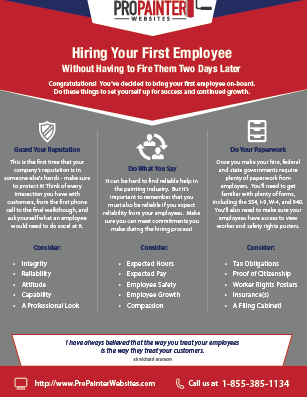Key Seasonal Considerations For Commercial Exterior Painting: What You Required To Be Informed Concerning
Key Seasonal Considerations For Commercial Exterior Painting: What You Required To Be Informed Concerning
Blog Article
Content By-Doherty Browne
When you're intending a commercial external painting task, seasonal elements can make or damage your outcomes. You'll intend to take into consideration how temperature level and humidity impact paint application and drying out times. Choosing painting coat can ensure your paint adheres effectively and lasts longer. Yet which seasons are truly the very best for this type of job? Let's check out the crucial elements that can affect your project's success.
The Effect of Temperature on Paint Application
When you're intending a business external painting job, the temperature level can dramatically impact exactly how well the paint sticks and dries.
Preferably, you intend to paint when temperatures range between 50 ° F and 85 ° F. If it's also cold, the paint might not heal effectively, leading to issues like peeling off or splitting.
On the other side, if it's too hot, the paint can dry out too rapidly, avoiding appropriate attachment and causing an irregular surface.
You should likewise consider the time of day; morning or late afternoon offers cooler temperature levels, which can be more favorable.
Constantly check the supplier's recommendations for the specific paint you're using, as they usually give assistance on the ideal temperature range for optimum results.
Moisture and Its Effect on Drying Times
Temperature level isn't the only environmental factor that influences your commercial outside painting project; moisture plays a considerable function also. High moisture degrees can decrease drying out times substantially, affecting the general high quality of your paint task.
When the air is filled with moisture, the paint takes longer to heal, which can cause issues like inadequate adhesion and a higher threat of mold growth. If you're painting on a specifically humid day, be gotten ready for prolonged wait times between layers.
It's crucial to keep track of neighborhood weather conditions and plan as necessary. Ideally, go for humidity degrees in between 40% and 70% for optimum drying.
Maintaining these factors in mind ensures your job stays on track and provides a long lasting finish.
Best Seasons for Commercial Outside Painting Projects
What's the most effective time of year for your commercial external paint tasks?
Springtime and very early fall are generally your best bets. Throughout these periods, temperatures are mild, and humidity levels are frequently lower, creating perfect problems for paint application and drying out.
Prevent summer's intense heat, which can cause paint to dry as well rapidly, causing poor adhesion and finish. Likewise, winter season's cool temperatures can prevent correct drying and treating, running the risk of the longevity of your paint job.
Aim for days with temperatures in between 50 ° F and 85 ° F for optimal outcomes. Remember to inspect get more info for rain, as wet problems can wreck your project.
Planning around these variables guarantees your painting project runs smoothly and lasts much longer.
Verdict
In conclusion, preparing your commercial outside painting jobs around seasonal considerations can make a significant difference in the outcome. By scheduling job throughout the ideal temperatures and moisture levels, you'll ensure much better adhesion and drying times. Keep in mind to watch on regional weather prediction and choose the correct time of year-- spring and early fall are your best bets. Taking these steps will assist you accomplish a resilient and expert surface that lasts.
